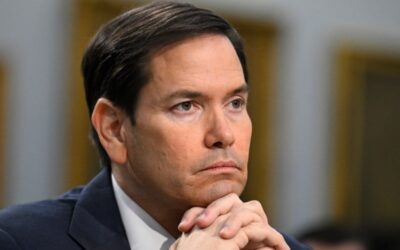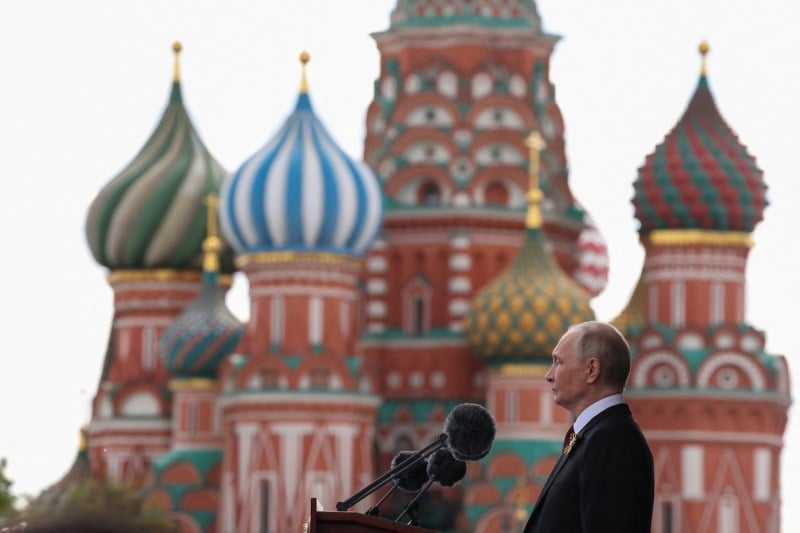Trump Could Put Gaza on a Better Path With One Tweet

Trump Could Put Gaza on a Better Path With One Tweet
He says he wants to end the war—his Gaza Riviera plan is prolonging it.
A motorcycle cart carries people and belongings along a dirt road in central Gaza on May 17. Saeed Jaras / Middle East Images / Middle East Images via AFP
U.S. President Donald Trump says he wants the war in Gaza to wrap up “as quickly as possible.” He has it within his power to hasten its end. But to do so, he needs to reverse one of his biggest errors: He must declare the death of his proposal to build a Gaza Riviera.
Trump’s frustration with the ongoing war, the failure to release hostages, and the harm coming to Palestinian civilians have been increasingly evident. It has intensified since Israeli Prime Minister Benjamin Netanyahu announced the expansion of military activity in Gaza, in what Israel calls “Operation Gideon’s Chariots.”
U.S. President Donald Trump says he wants the war in Gaza to wrap up “as quickly as possible.” He has it within his power to hasten its end. But to do so, he needs to reverse one of his biggest errors: He must declare the death of his proposal to build a Gaza Riviera.
Trump’s frustration with the ongoing war, the failure to release hostages, and the harm coming to Palestinian civilians have been increasingly evident. It has intensified since Israeli Prime Minister Benjamin Netanyahu announced the expansion of military activity in Gaza, in what Israel calls “Operation Gideon’s Chariots.”
But Trump’s own actions helped lead to this point. When Netanyahu visited the White House in February, Trump made a fateful choice. Newly inaugurated, and flush with the success of helping arrange a cease-fire and hostage deal during the presidential transition, Trump could have told Netanyahu he expected Israel to proceed with the next phase of the deal: the release of all living male hostages in exchange for an end to military operations.
Netanyahu could hardly have refused. It might have created political challenges for the Israeli premier, whose far-right coalition partners opposed the deal and could have brought down his government. But Trump could have offered a range of support—chiefly, a presidential visit—as Netanyahu went through the election campaign that would follow.
Instead, Trump outflanked Netanyahu from the right, declaring his vision of emptying Gaza of all Palestinians, with the United States taking control of the territory and building a strip of beachfront hotels. A few weeks later, he reinforced this proposal by posting a gaudy AI-generated video depicting the fantasy.
The plan was utterly unrealistic from the start. The White House quickly clarified that Trump envisioned no U.S. troops taking part and no U.S. funds being used to implement it. No other countries stepped forward either to host the displaced Palestinians or with money to pay for the grand reconstruction. Having never asked Gaza’s residents if they wanted to leave—surely some do, and should be permitted to, but others would choose to stay—Trump’s plan, if it forced the latter category out, would amount to ethnic cleansing.
But even a mirage can cause damage. What the Gaza Riviera plan did accomplish was to empower the far-right Israeli leaders, Finance Minister Bezalel Smotrich and National Security Minister Itamar Ben-Gvir, to pursue their extremist agenda of ridding Gaza of Palestinians, followed by Israeli reoccupation and resettlement.
Netanyahu, whose political fate rests in their hands, has proved unable to resist them. Since the far-right ministers insist on continuing the war, Netanyahu has ignored the large majority of Israelis calling for a release of all hostages in exchange for an end to the fighting and insists he will only support a temporary cease-fire for a limited number of hostages. He calls this idea the “Witkoff framework,” named for Trump’s special envoy, Steve Witkoff. Hamas continues to reject this plan. Even if it succumbs to the pressure to accept it—and there are signs that it may do so imminently—these circumstances will return once it expires.
Now, with hostage talks stuck and the Israel Defense Forces (IDF) advancing into Gaza, Netanyahu has, for the first time, set implementation of the “Trump plan” as a condition for ending the war. This goes far beyond the original legitimate war aims of returning all hostages and removing Hamas from power.
This declaration will lead nowhere good, and certainly not to the quick end of the war Trump seeks. Israel aims to control 75 percent of Gaza’s territory within two months, with Palestinian civilians clustered in a few small areas. A new, still unproven humanitarian assistance distribution plan is just getting underway, with the goal of depriving Hamas of access to the aid. But the director of the Gaza Humanitarian Foundation intended to lead it resigned before it even launched, and its prospects of success are uncertain.
As the IDF operation progresses, the lives of the 20 or so living hostages will be in great jeopardy. Hamas, badly damaged, will still mount an ongoing insurgency from the hundreds of miles of tunnels it controls.
If it appears Israel will reoccupy all of Gaza, Arab states will refuse to assist with humanitarian aid or Hamas’s removal, declaring these Israel’s problems. The Israeli far right will see annexation and resettlement of Gaza within its grasp. All of these developments will destabilize the West Bank. And Israel’s international isolation, which advanced last week via penalties and warnings announced by the leaders of France, the United Kingdom, and Canada, will deepen further.
Trump missed another opportunity during his recent Middle East swing. He was so focused on scoring deals with Gulf partners that he ignored Gaza and Israel, which offered him no wins.
But he is not an actor without influence. He could have used the visit differently—adding a stop in Israel and insisting on proceeding with the full hostage deal. He could have supplemented a permanent cease-fire with a U.S. side letter recognizing Israel’s right to act against Hamas threats—the same mechanism the United States used to support a cease-fire in Lebanon last fall. He could have secured commitments from Arab states for a plan to exile Hamas leaders and fighters from Gaza and rebuild Gaza under a Palestinian leadership prepared to live peacefully with Israel. He could then have renewed progress on a prized objective, Israeli-Saudi normalization.
Trump can still do all these things and head off a disaster in the making. But he must start by walking back his Gaza Riviera proposal. We know Trump hates to admit a mistake. But Netanyahu’s embrace of this plan has become a major obstacle to the release of hostages and a better path for Gaza. It is fueling the worst instincts of Israeli politicians whose agenda would upset Trump’s own regional goals.
With a single tweet, he could set Gaza on a better path: “MY ORIGINAL PLAN FOR THE U.S. TO TAKE OVER GAZA IS UNREALISTIC. LET’S MOVE TO A CEASE-FIRE THAT RELEASES ALL THE HOSTAGES, AND I’LL WORK WITH ISRAEL AND OUR ARAB FRIENDS ON A PLAN TO REMOVE HAMAS.” Following up with vigorous diplomacy could prevent a humanitarian catastrophe, save the lives of hostages and Palestinian civilians, and create an opening for a day-after plan without Hamas. But he must abandon his Gaza Riviera dreams.
This post is part of FP’s ongoing coverage of the Trump administration. Follow along here.
Daniel B. Shapiro is a distinguished fellow at the Atlantic Council. He has served as the U.S. ambassador to Israel and the deputy assistant secretary of defense for the Middle East. X: @DanielBShapiro
Stories Readers Liked
In Case You Missed It
A selection of paywall-free articles

Four Explanatory Models for Trump’s Chaos
It’s clear that the second Trump administration is aiming for change—not inertia—in U.S. foreign policy.





















Join the Conversation
Commenting is a benefit of a Foreign Policy subscription.
Subscribe
Subscribe
Already a subscriber?
.
View Comments
Join the Conversation
Join the conversation on this and other recent Foreign Policy articles when you subscribe now.
Subscribe
Subscribe
Not your account?
View Comments
Join the Conversation
Please follow our comment guidelines, stay on topic, and be civil, courteous, and respectful of others’ beliefs.
View Comments
Change your username |
Log out
Change your username:
CANCEL
Confirm your username to get started.
The default username below has been generated using the first name and last initial on your FP subscriber account. Usernames may be updated at any time and must not contain inappropriate or offensive language.